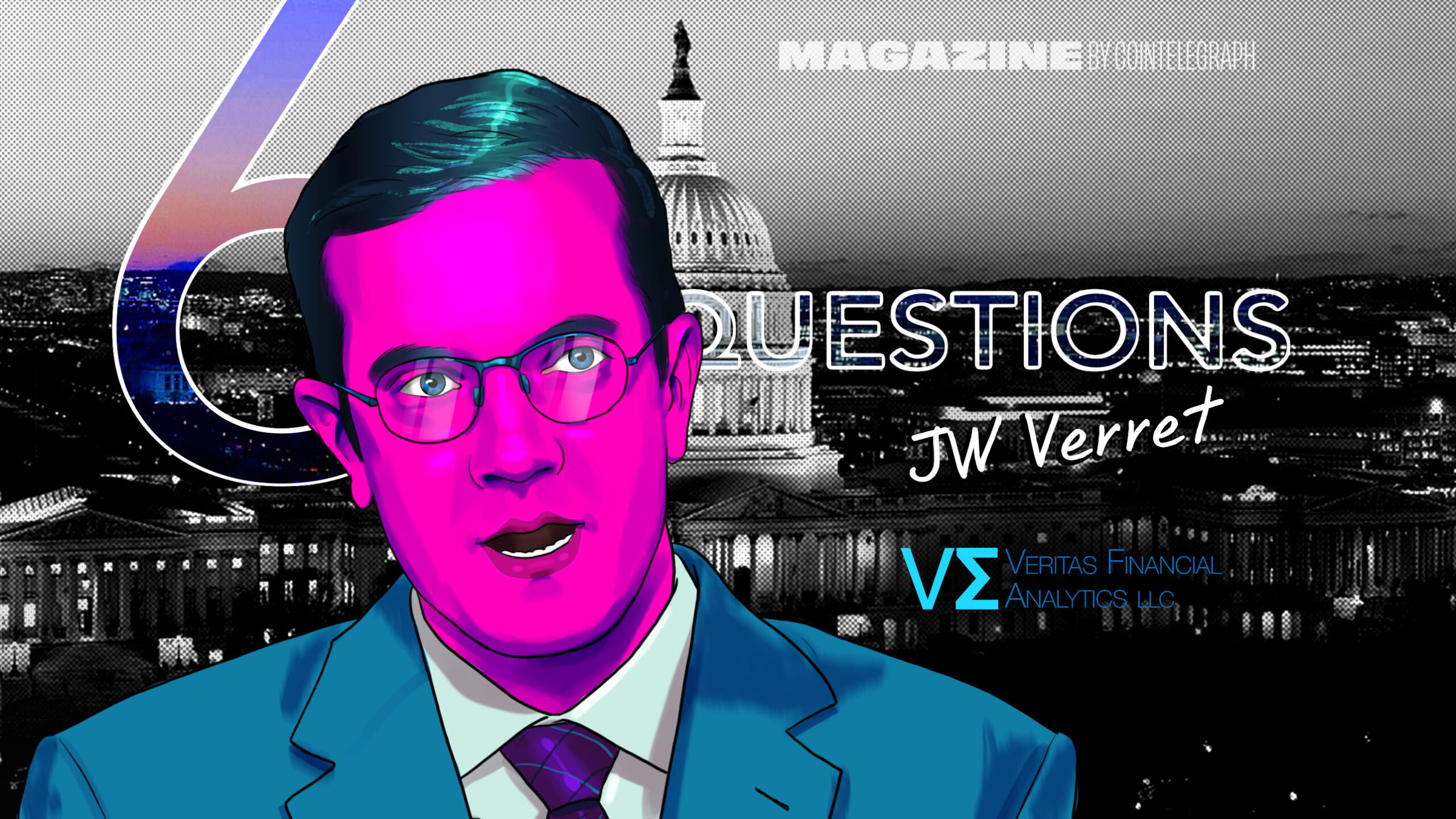
Adelle Nazarian and the American Blockchain PAC are in Washington, D.C. fighting for your right to buy and HODL cryp.
Adelle Nazarian is the top staffer at the American Blockchain PAC, where she serves as its CEO. But she has a long story to tell about her life prior to her time in the crypto industry from her Persian roots to her career in journalism.
Nazarian, who worked as a freelance journalist after serving in positions with mainstream outlets that included Fox News and CNN, said her work contributed to her disillusionment with the media. “Working in journalism was really eye-opening for me because I witnessed how divisive and activist-oriented it’s become,” she said in an interview with Cointelegraph.
She said her desire to work in a role that contributed to people’s betterment was one of the driving factors that led her to the American Blockchain PAC in 2021, saying, “I saw Bitcoin as being one way of providing an opportunity to people everywhere in the world to pull themselves up in life.”
1) Your family fled from Iran before the Iranian Revolution, but you’ve never visited. Do you speak Farsi? Tell us more about your background.
My parents were both born in Tehran, Iran and emigrated to the United States when they were young. My father was 15 and my mother was 12. I was raised speaking Farsi and English. (I also speak Mandarin Chinese and French.) It is one of my dreams to visit Iran someday in the future. Id love to visit so many parts of the country and especially to visit Isfahan, which is where my maternal grandparents were born and raised. I am proud to come from such a rich, diverse and beautiful cultural background.
My mom is a homemaker and also had a caviar business for several years and my father is an entrepreneur.
2) You used to work in journalism at Fox News, CNN and elsewhere. Why’d you make the transition into crypto?
Working in journalism was really eye-opening for me because I witnessed how divisive and activist-oriented it’s become. Reporting a story isn’t about the facts anymore for some journalists it’s about injecting their own ideas.
I really enjoyed doing investigative journalism, but I consider myself to be an entrepreneur and philanthropist at heart. I felt that, really, the blockchain space was a way to be able to have a platform to utilize my experience and work with diverse people from leaders of countries to everyday people and see how everyone’s experience is truly predicated on one underlying theme that connects them all.

That theme is the desire and ability to create a better life for themselves and those around them. It’s such a factor that determines your lot in life. I saw Bitcoin as being one way of providing an opportunity to people everywhere in the world to pull themselves up in life. It also provides governments with the opportunity to reduce their reliance on war as a way to increase wealth.
3) Tell us about the American Blockchain PAC.
The American Blockchain PAC was founded as a way to provide a space for everyone interested in seeing a sound regulatory framework to define what crypto is and what Bitcoin is, and in clearly defining and understanding them and how they’re classified in the United States.
Related: Crypto industry seeks to educate, influence US lawmakers as it faces increasing regulation
We boost candidates running for office who support blockchain technology. But I think a lot of political action committees try to only basically pick and support candidates who will win and we don’t just do that. We’re also trying to educate and inform people about crypto and the adoption of digital assets, and enable them to push back against legislation that could harm them at the end of the day.
4) What’s your favorite crypto?
Bitcoin because it’s different from other cryptocurrencies. I believe everyone is grateful that the SEC made it very clear that Bitcoin is not a security. I think that Ethereum began with good intentions but may have steered away from its original vision. That said, I think there is a bright future for it and an opportunity for it to evolve. Bitcoin is a pioneer in the digital assets space. It started the revolution we are living through today.
Unfortunately, I think a lot of meme coins and altcoins have put a bad taste in people’s mouths when it comes to digital assets, and I think it strengthens the argument for Bitcoin greatly.
5) Does it matter if we ever figure out who Satoshi really is or was? Why, or why not?
There are two quotes I like: “No amount of evidence will ever persuade an idiot,” by Mark Twain and “The truth is a strange thing. You can try to suppress it but it will always find its way to the surface.”
So of course there are people who are faking and pretending to be Satoshi. The “FakeToshi” hashtag is an indicator of that fact. But at the end of the day, the real Satoshi Nakamoto is alive, and he is not a Japanese man. I recently read Ivy McLemores book, Finding Satoshi, and it was intriguing.

Anyone who has actually done their due diligence and studied Bitcoin understands there must be some reason for Bitcoins origins. Satoshi did not want these so-called trusted third parties and banks running away with consumer cash, which is a persistent issue just look at what occurred with FTX. Its ironic that what hes stood against from Day 1 trusted third parties like FTX have actually become the main tools for buying and selling Bitcoin. This is not in line with his original vision.
As for whether it matters who Satoshi is, only the real Satoshi will pave the way for the next generation of Bitcoin and dozens of new and emerging industries that will benefit from the underlying blockchain technology. Satoshi created Bitcoin to be decentralized and peer-to-peer. He never sought to do any of this based on his own personal greed or agenda. He did this for the world. Technically, we are all Satoshi.
It’s the vision that matters, because even the most incredible technology without vision is a dormant tool. Bitcoin was created to elevate humanity in a truly unprecedented way in our collective history.
6) What do you do in your free time?
I’m a big foodie. I enjoy different cuisines. I can make recipes from all over the world. Being Persian, one of my favorites is khoresht gheymeh it’s a tomato-based stew made with beef, lentils and spices, served traditionally with rice and tahdig a crispy golden crust over fluffy rice. I also enjoy working out, reading, and traveling. I love to travel.








































